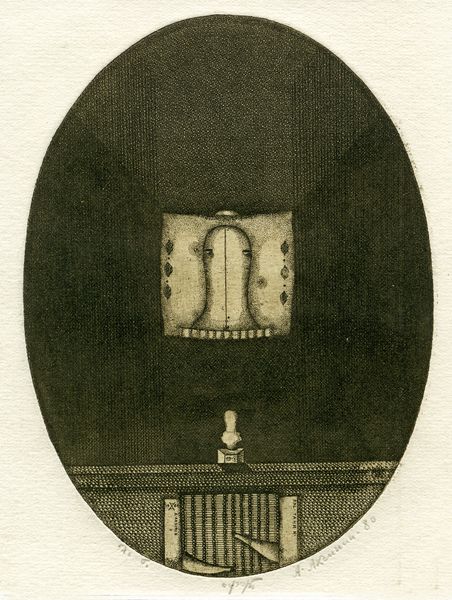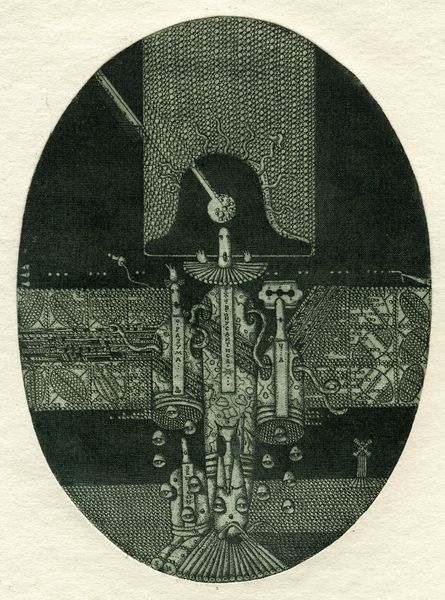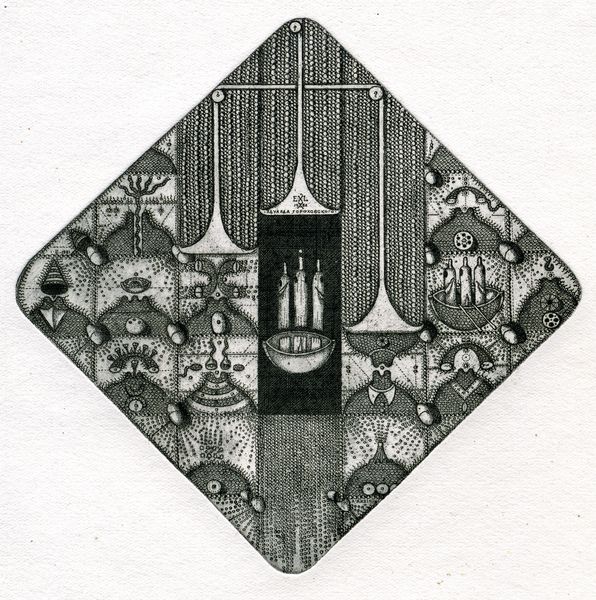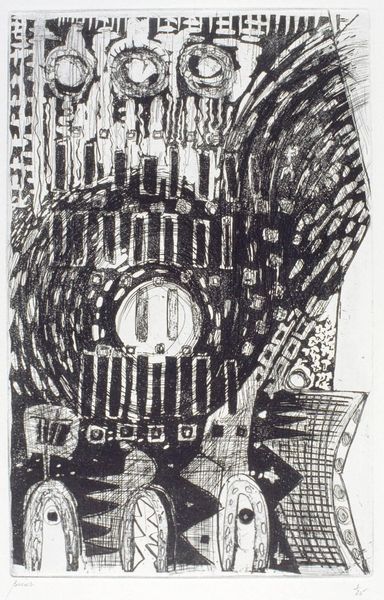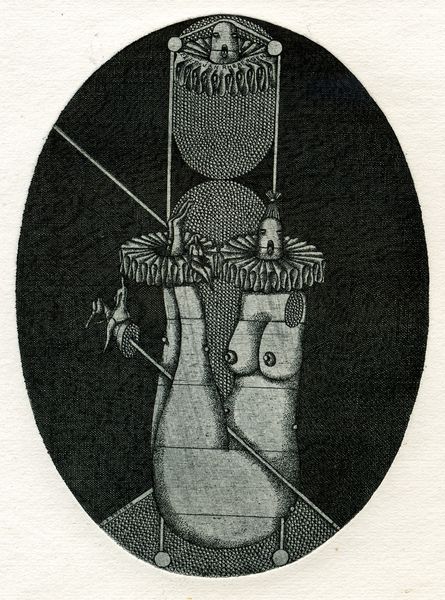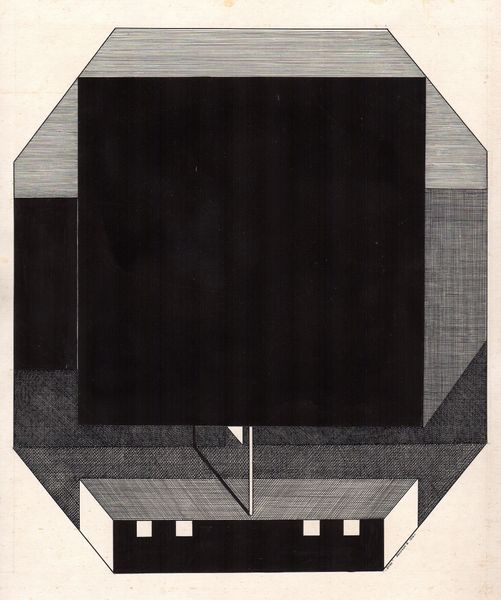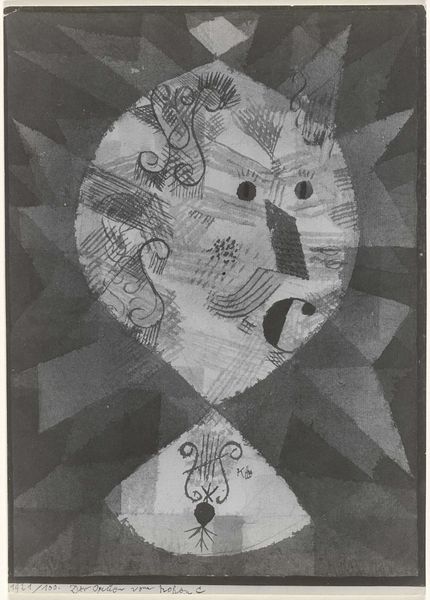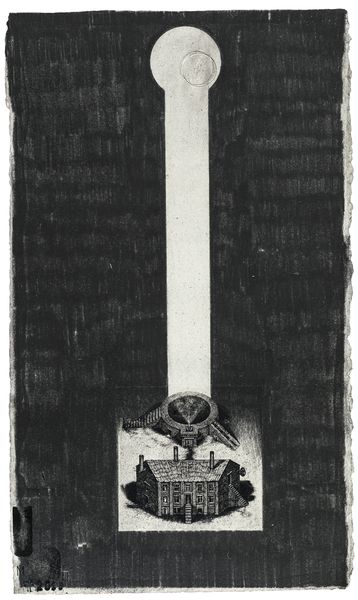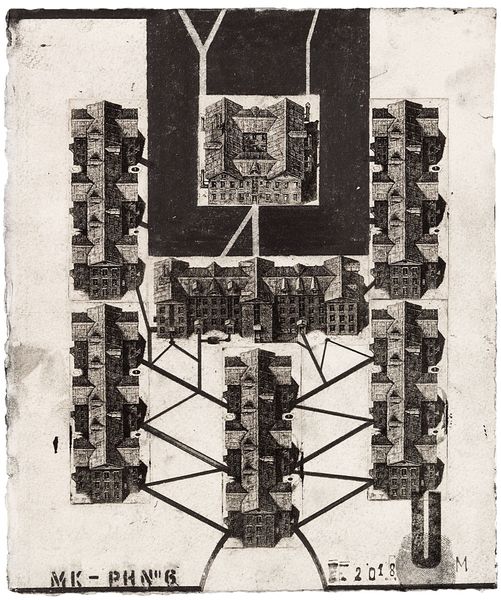
Copyright: Oleksandr Aksinin,Fair Use
Curator: So, let’s talk about Oleksandr Aksinin’s “March,” created in 1981 using ink on paper. It strikes me as very dreamlike, almost a surrealist puzzle, but there’s something unsettling about it too. The geometric forms… it feels very constructed. What do you see in this piece? Editor: The way you describe it as constructed really resonates. To me, all these meticulously rendered squares give the sense of confinement, almost like a cage built from language and symbols, hinting at the means by which society confines individuals. The boat emerging from this matrix almost seems like a symbolic attempt to escape... Do you think Aksinin is trying to draw connections between societal production, or restriction, and the figure here? Curator: Precisely! Aksinin was working in Soviet Ukraine, where artistic expression was heavily regulated. Think about the materiality of this drawing – ink on paper, humble materials but incredibly labor-intensive in its detail. This could be read as a direct response to the dominant, often monumental, Socialist Realism. Could this very process – the painstaking mark-making – be a form of resistance, of claiming agency through the handmade in a society that prioritized industrial production and collective creation? Editor: I didn’t consider it that way before. Thinking about the labor involved definitely shifts my perception. The geometric grids don’t just feel abstract; they're evidence of work, of constraint and control exerted by a material process on both the artist and, representationally, on the subject in the picture itself. So how much would Aksinin’s personal, economical or social constraints influence his choice of figuration and materials here? Curator: That's the crux of it. He had little resource control over his creative world in Soviet Ukraine. So the means of production here isn't just about technique; it's about power, about resisting a system that sought to dictate artistic creation. His work asks us to consider the political weight of material choices, pushing us to think beyond aesthetics. Editor: Thinking about his resource control as an artist really illuminates how seemingly simple material choices are powerful declarations in response to political factors and how the labour intensivity represents the social restrictions to which artists like Aksinin were subjected at that time. Thanks so much!
Comments
No comments
Be the first to comment and join the conversation on the ultimate creative platform.
